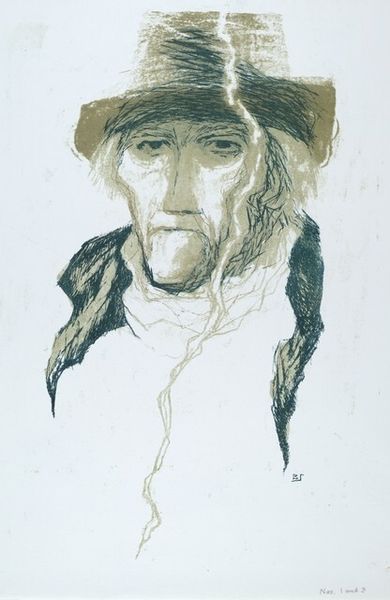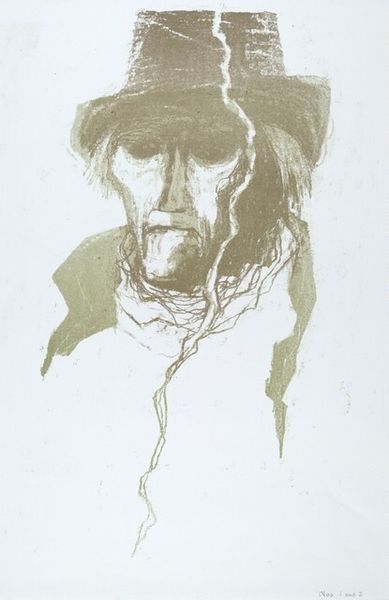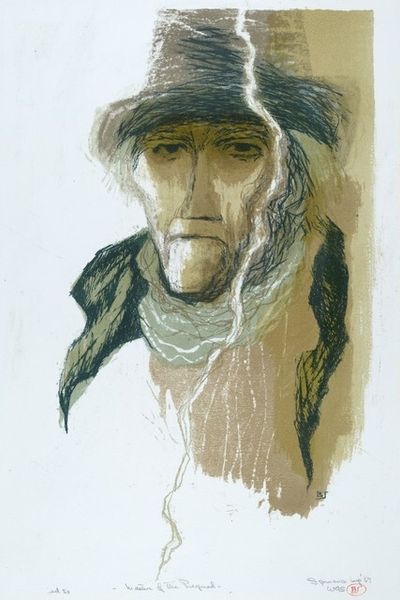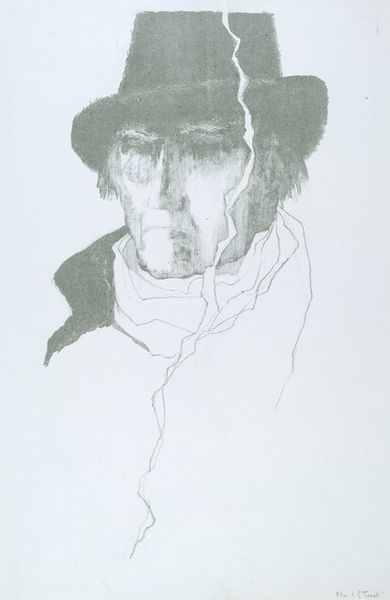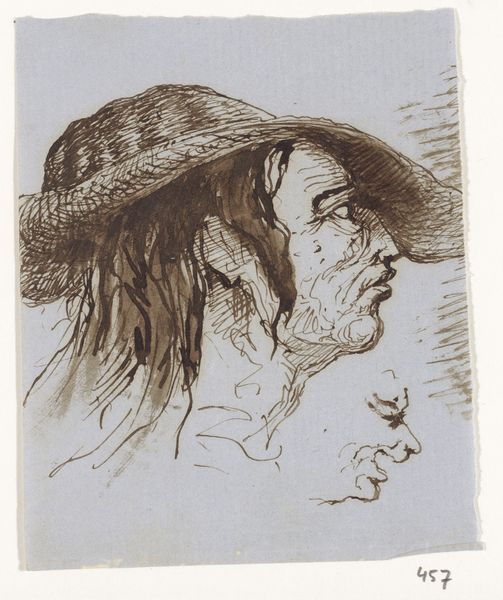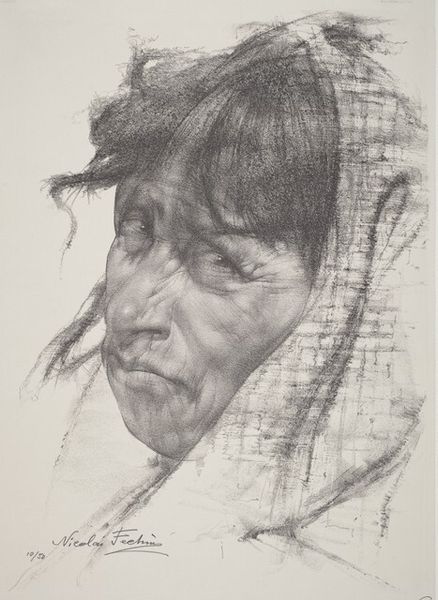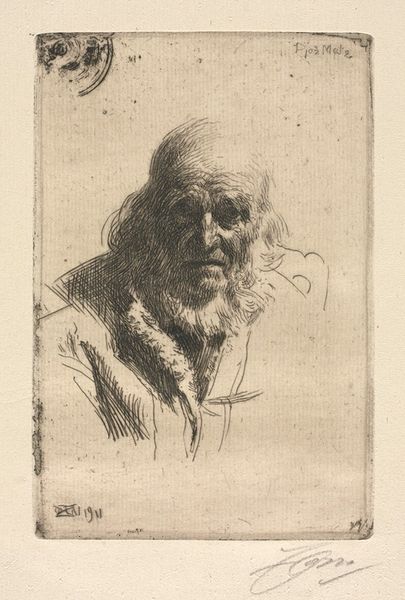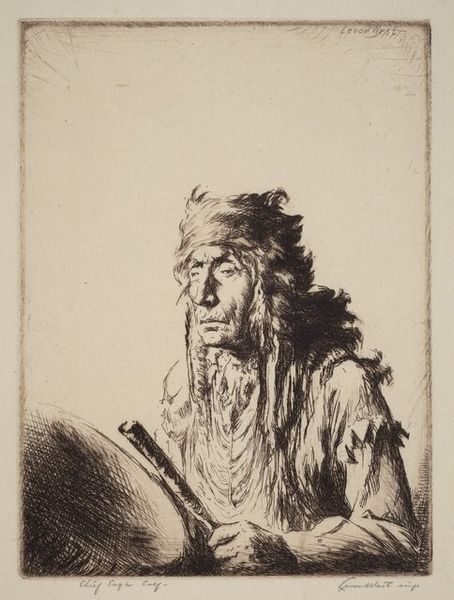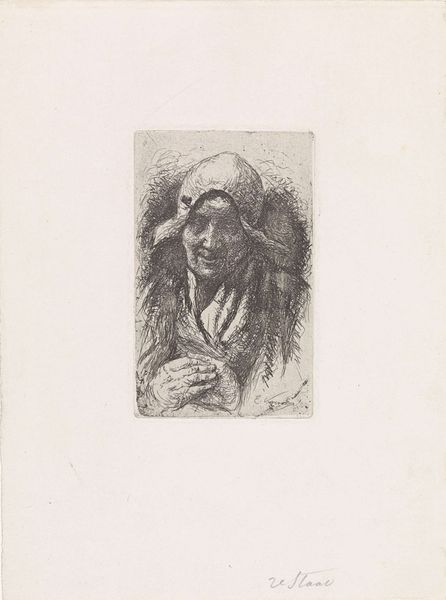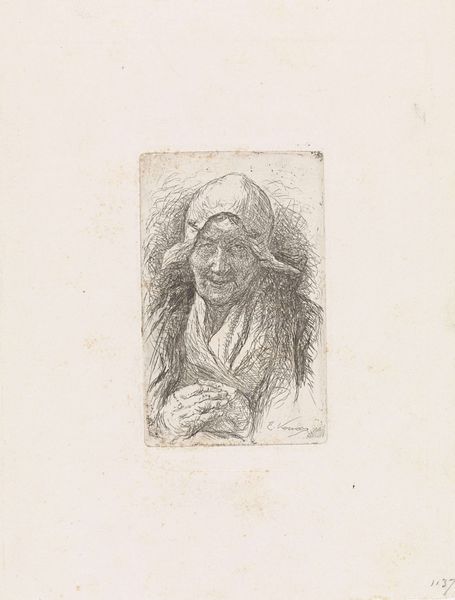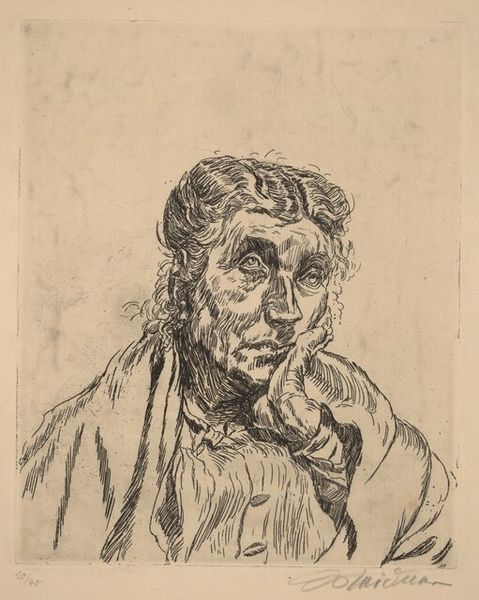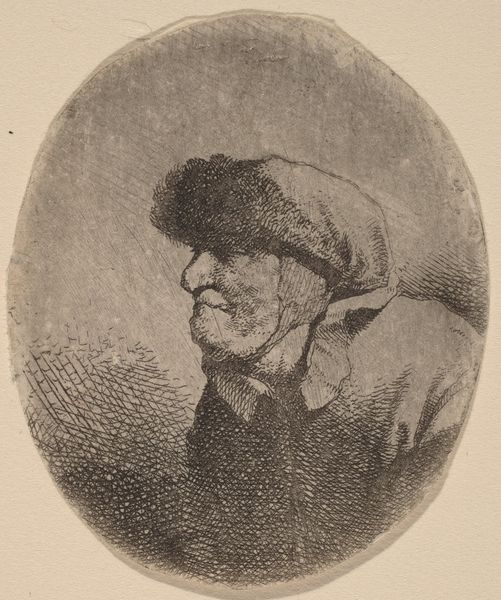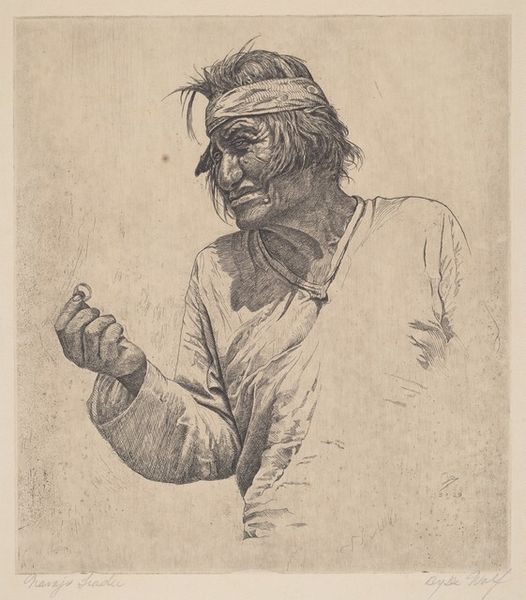
drawing, print, graphite, charcoal
#
portrait
#
drawing
# print
#
pencil sketch
#
charcoal drawing
#
pencil drawing
#
graphite
#
portrait drawing
#
charcoal
Copyright: National Gallery of Art: CC0 1.0
Editor: So this is "Master of the Pequod," a 1967 drawing by Benton Spruance. It’s graphite and charcoal on paper, I believe. I'm struck by how raw and vulnerable this portrait feels. There's this sense of almost...tortured wisdom, perhaps? What do you see in this piece? Curator: That's a wonderful initial reaction. The vulnerability you're sensing speaks volumes. To me, this image becomes powerful when viewed through the lens of Spruance's broader commentary on power dynamics. Ahab, as a figure, embodies a destructive, almost fascistic obsession. How does Spruance use visual language to communicate that in this portrait? Editor: Hmm, I see it. It’s in the intensity of his gaze and those stark, almost decaying lines. Curator: Exactly. Spruance uses the print medium and his mark-making to suggest the crumbling nature of absolute authority. It invites us to question these figures, not just as literary characters, but as symbols of control throughout history and even in our present. What does it say about the cult of personality when portrayed this way? Editor: It's unsettling to see a figure so mythologized depicted so frail. Is he criticizing the romanticisation of destructive ambition? Curator: Precisely. Spruance seems to be dissecting the very concept of the heroic, challenging the traditional narrative that equates strength with ethical behavior. Is that "strength" worth its cost? Consider the implications this has on depictions of power— who are these leaders, and how are we complicit in allowing this destructive behavior? Editor: That definitely shifts my perspective. I initially focused on the aesthetic, but seeing it as a commentary on power structures and hero worship… it gives the piece a sharper, more critical edge. Curator: And that's where art history truly engages. It moves beyond just the image and becomes a dialogue, connecting the past with our ongoing struggles. Editor: I never would have considered this as speaking to broader issues of destructive power. Thank you!
Comments
No comments
Be the first to comment and join the conversation on the ultimate creative platform.
